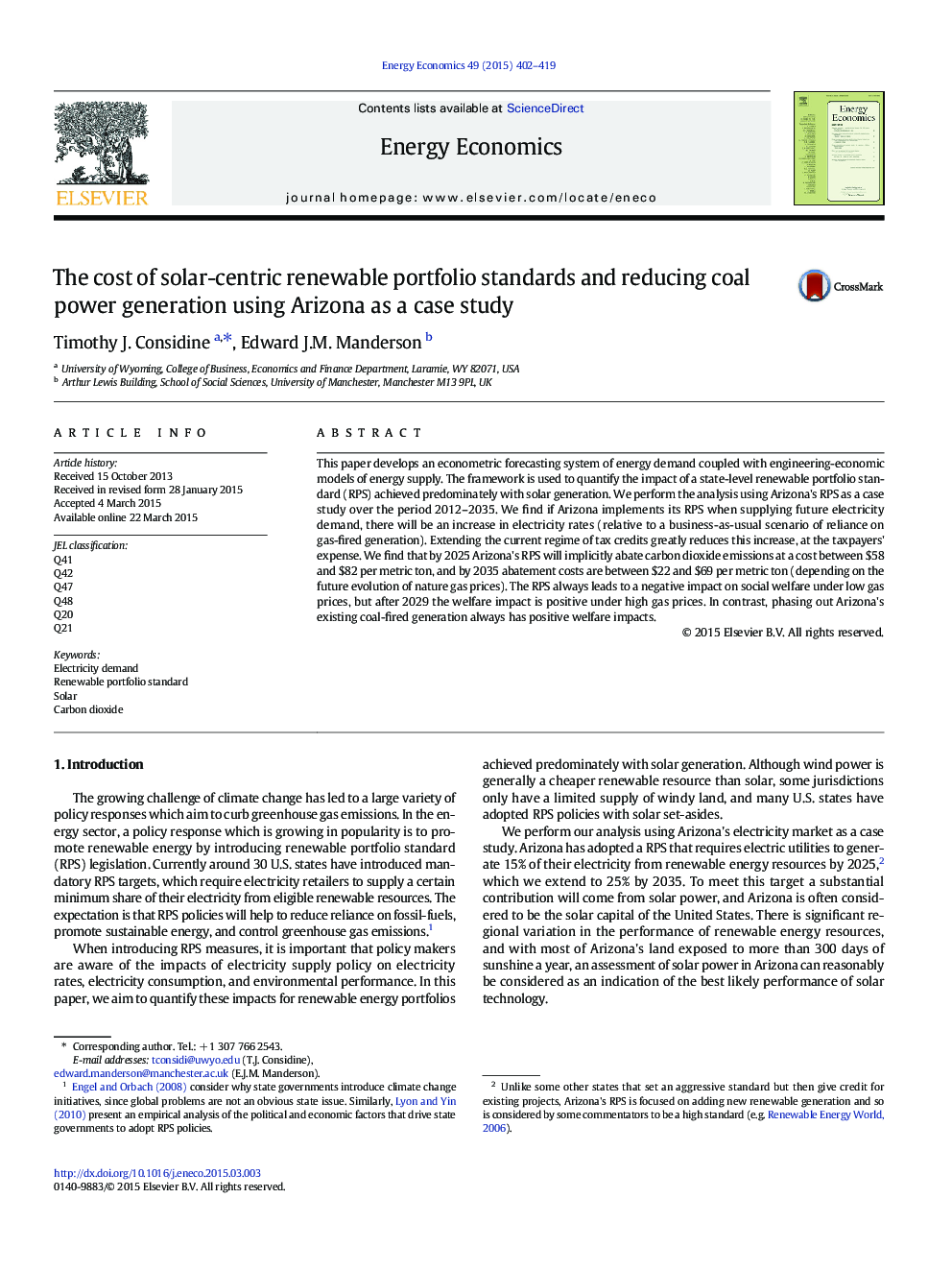| کد مقاله | کد نشریه | سال انتشار | مقاله انگلیسی | نسخه تمام متن |
|---|---|---|---|---|
| 5064496 | 1476714 | 2015 | 18 صفحه PDF | دانلود رایگان |
- This paper quantifies the energy impacts of solar centric renewable standards.
- The analysis is performed using Arizona as a case study.
- Implementing Arizona's RPS will lead to an increase in electricity rates.
- The current regime of tax credits can greatly reduce this increase.
- We calculate the implicit cost of CO2 emission abatement and welfare impacts.
This paper develops an econometric forecasting system of energy demand coupled with engineering-economic models of energy supply. The framework is used to quantify the impact of a state-level renewable portfolio standard (RPS) achieved predominately with solar generation. We perform the analysis using Arizona's RPS as a case study over the period 2012-2035. We find if Arizona implements its RPS when supplying future electricity demand, there will be an increase in electricity rates (relative to a business-as-usual scenario of reliance on gas-fired generation). Extending the current regime of tax credits greatly reduces this increase, at the taxpayers' expense. We find that by 2025 Arizona's RPS will implicitly abate carbon dioxide emissions at a cost between $58 and $82 per metric ton, and by 2035 abatement costs are between $22 and $69 per metric ton (depending on the future evolution of nature gas prices). The RPS always leads to a negative impact on social welfare under low gas prices, but after 2029 the welfare impact is positive under high gas prices. In contrast, phasing out Arizona's existing coal-fired generation always has positive welfare impacts.
Journal: Energy Economics - Volume 49, May 2015, Pages 402-419
